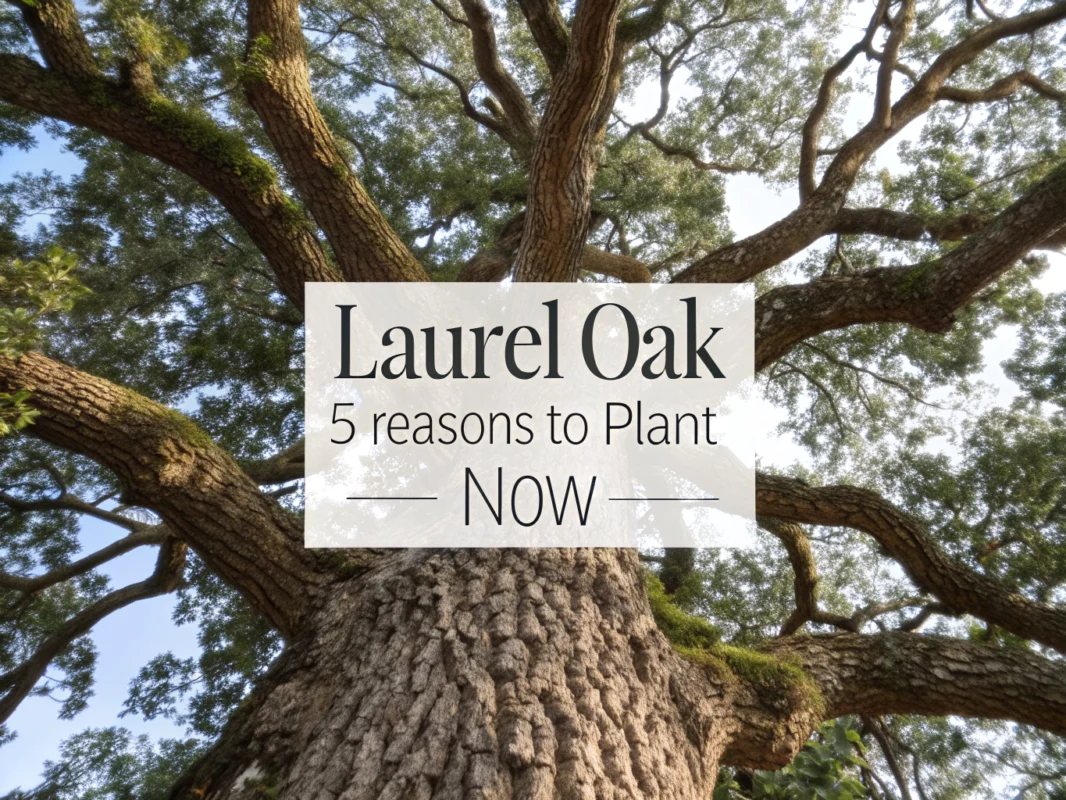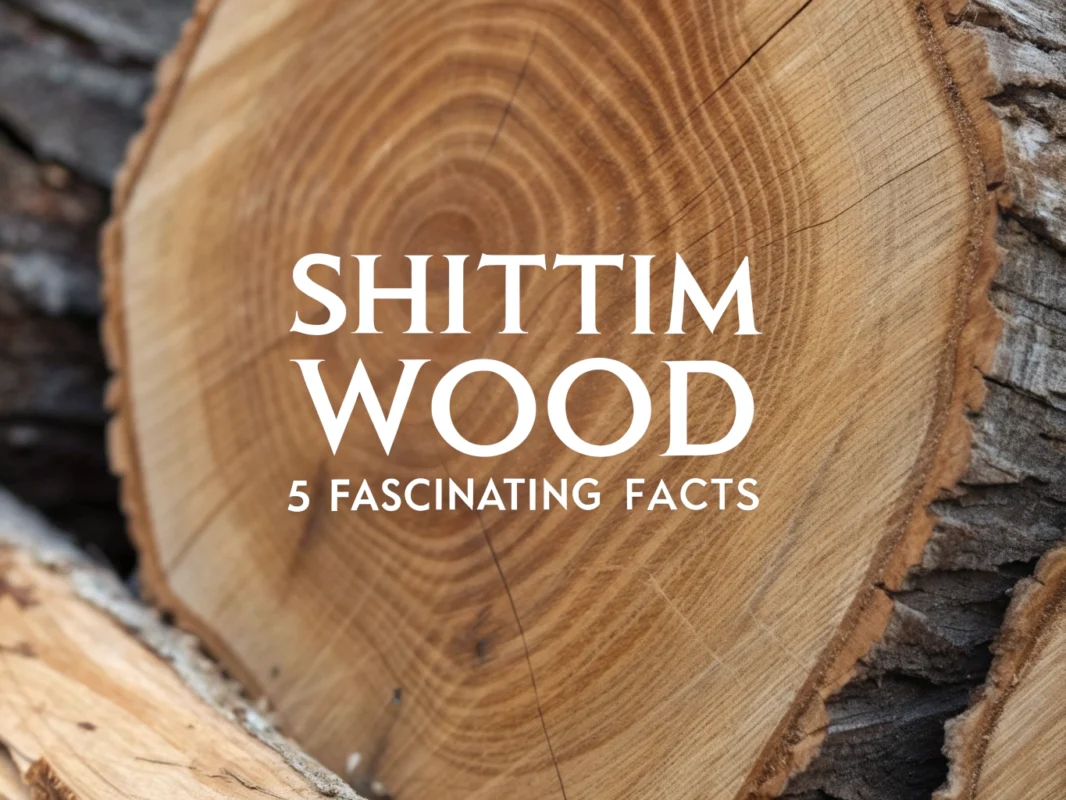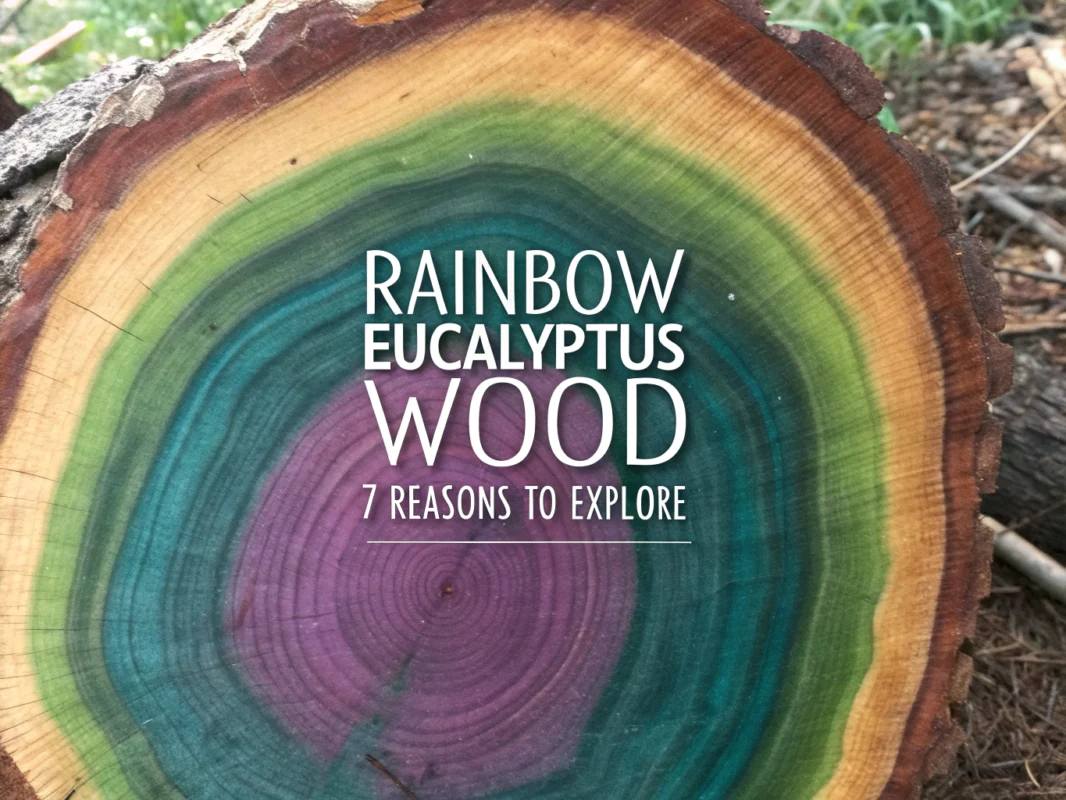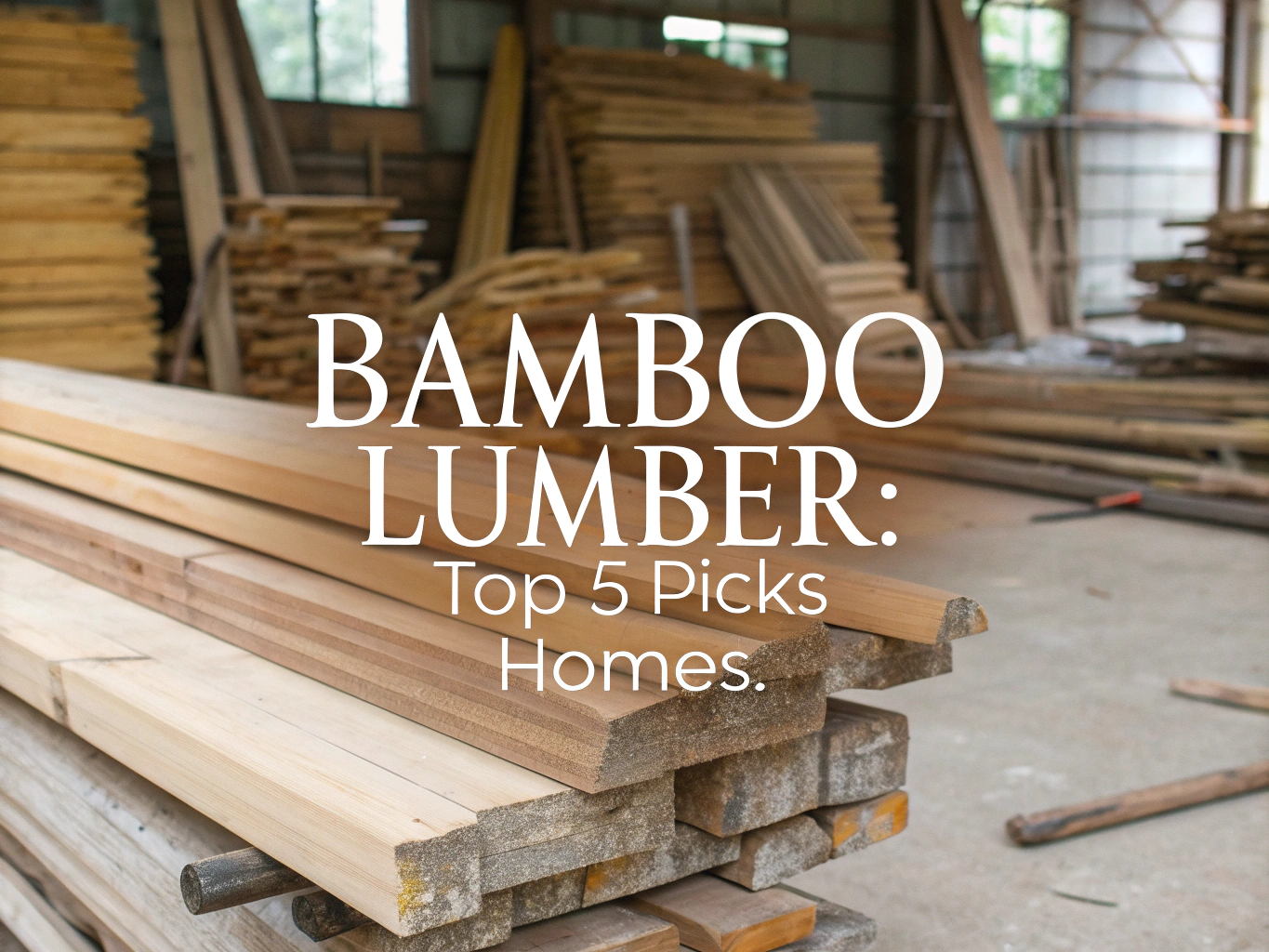
Bamboo Lumber: Top 5 Picks for Homes

Did you know that bamboo can grow up to 3 feet in just one day? This incredible growth rate makes it one of the most sustainable and eco-friendly building materials available. Whether you’re renovating your kitchen or adding new floors, bamboo lumber is an excellent choice. It’s not just about speed; bamboo’s strength compares to steel, making it both reliable and sustainable for various home projects. Let’s explore some top picks you might find perfect for your home.
Table of Contents
Bamboo lumber offers exceptional strength comparable to steel while maintaining its status as one of the fastest-growing renewable resources on Earth. This sustainable building material combines superior durability with eco-friendly production, making it an increasingly popular choice for modern home construction and DIY projects.
What is Bamboo Lumber and Why Choose It for Your Home?
Benefits and Properties of Bamboo Lumber
Bamboo lumber stands out for its remarkable properties that make it ideal for various home applications. The material’s tensile strength rivals steel, making it suitable for load-bearing structures and high-traffic flooring. This strength comes from bamboo’s natural fiber structure, which provides flexibility and shock resistance that traditional hardwoods can’t match.
The eco-friendly nature of bamboo lumber sets it apart from conventional building materials. Coastal Custom Products notes that bamboo can be harvested within five years, compared to decades required for hardwood trees. This rapid growth cycle makes bamboo one of the most sustainable building materials available.
- Moisture resistance that minimizes warping and swelling
- Natural resistance to termites and fungi
- Fire resistance capabilities, especially in compressed varieties
- Superior carbon dioxide absorption compared to most trees
- Energy-efficient production process
- Earthquake and disaster resistance due to flexibility
Bamboo Lumber vs. Traditional Wood Comparison
The differences between bamboo lumber and traditional wood are striking. Building Renewable highlights that bamboo can grow up to three feet per day, while hardwood trees require decades to reach maturity. This growth advantage translates to better sustainability and lower environmental impact.
| Feature | Bamboo Lumber | Traditional Wood |
|---|---|---|
| Growth Rate | Up to 3 ft. per day | Decades to mature |
| Sustainability | Highly renewable | Often limited |
| Strength | Comparable to steel | Varies by species |
| Moisture Resistance | High | Moderate/varies |
| Maintenance | Low | Moderate |
Top 5 Bamboo Lumber Products for Home Projects
These carefully selected bamboo lumber products offer versatility and quality for various home improvement projects:
Sleek Bamboo Wood Sheets
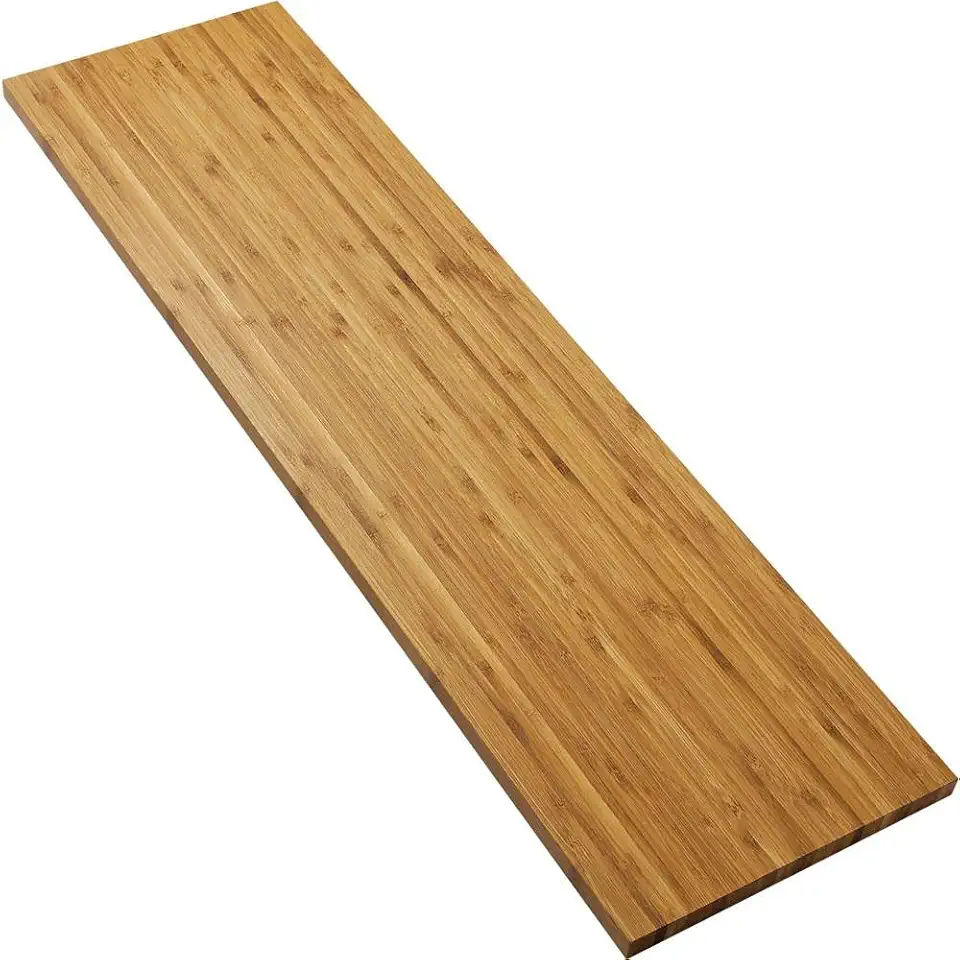
Sleek Bamboo Wood Sheets
- Durable and silky smooth finish
- Distinctive striated appearance
- Ideal for crafts and DIY projects
- Perfect for small bookcases and cabinets
- Great for cribbage blanks and more
Bulk Bamboo Cutting Board Set
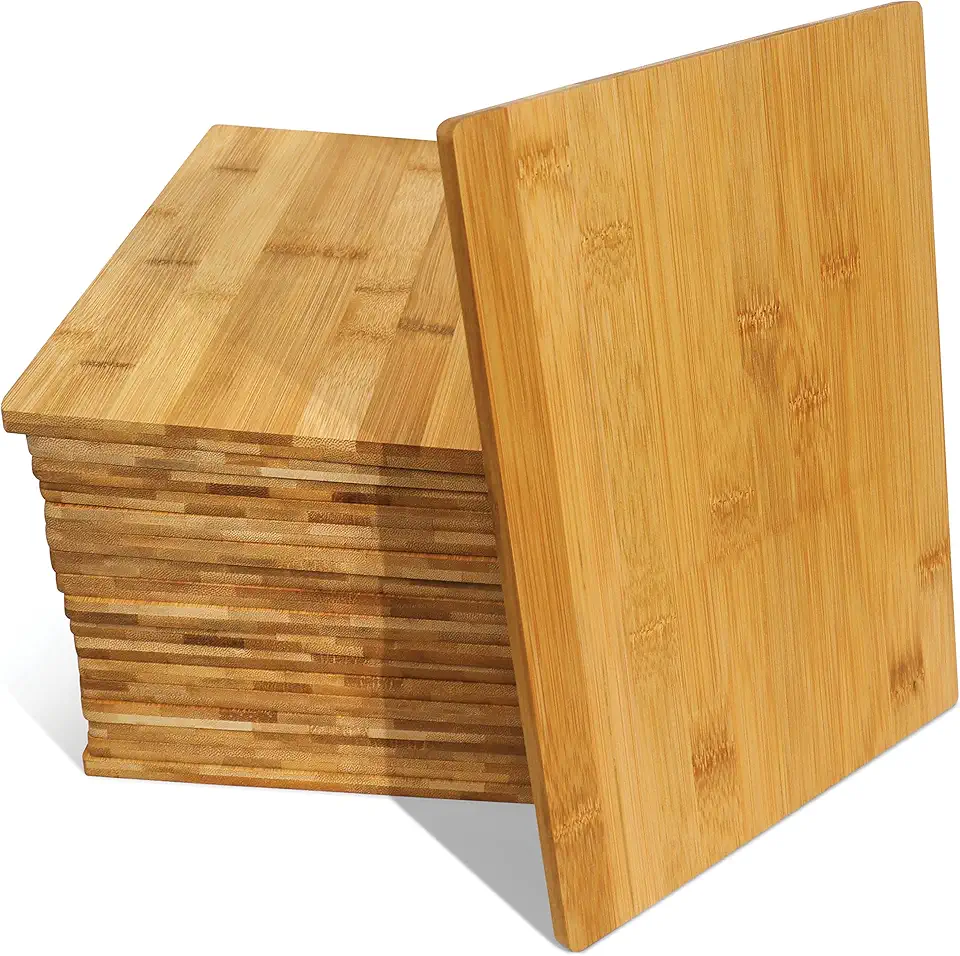
Bulk Bamboo Cutting Board Set
- Includes 18 cutting boards
- Premium bamboo quality
- Perfect for engraving and kitchen use
- Sturdy yet easy to maintain
- Ideal for wholesale purchases
Square Bamboo Dowel Sticks

Square Bamboo Dowel Sticks
- 10 pieces in one set
- Ideal for crafts and home decor
- Unfinished bamboo for customization
- Perfect for model making
- Great for DIY enthusiasts
XL Bamboo Chopping Board
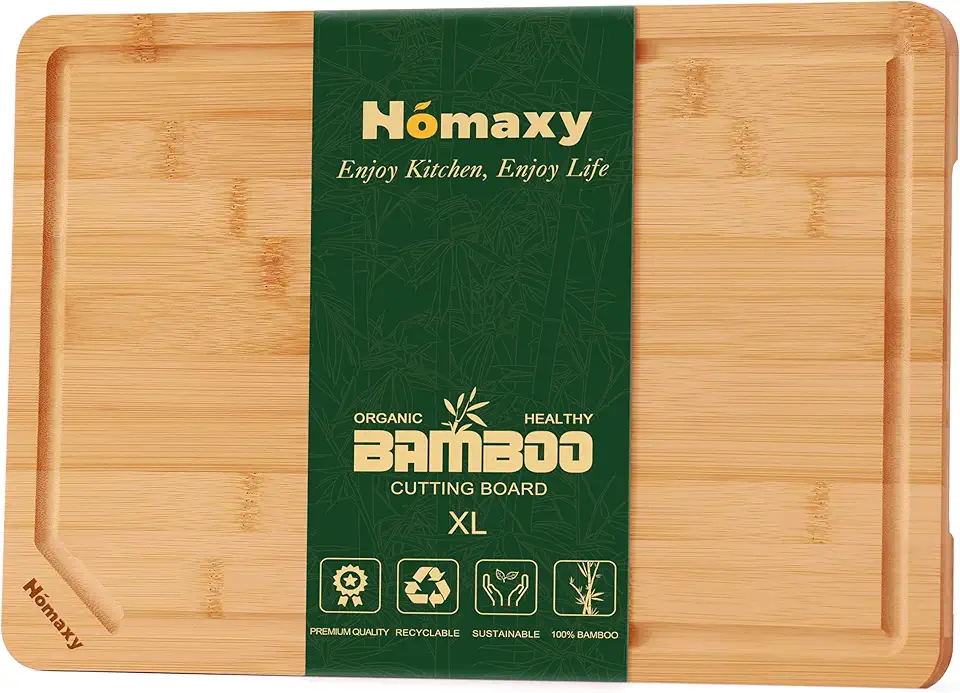
XL Bamboo Chopping Board
- Extra-large size for versatile use
- Includes juice groove and handles
- Ideal for serving and chopping
- Pre-oiled for enhanced durability
- Eco-friendly bamboo material
Bamboo Engraving Blanks Set

Bamboo Engraving Blanks Set
- Set of 20 blanks for engraving
- Smooth surface for easy carving
- Perfect for personalized crafts
- Ideal for DIY projects
- High-quality bamboo material
Home Applications for Bamboo Lumber
Structural and Flooring Uses
Bamboo lumber excels in structural applications due to its exceptional load-bearing capacity. Solid and engineered bamboo flooring options provide durability that withstands high-traffic areas while maintaining an attractive appearance. The material’s natural flexibility makes it particularly suitable for areas prone to seismic activity.
Many homeowners choose bamboo flooring for its contemporary aesthetic and ease of maintenance. The consistent grain pattern and natural color variations create visual appeal that complements both modern and traditional interior designs.
Interior Design Applications
Interior designers frequently specify bamboo lumber for custom cabinetry and wall paneling projects. The material’s smooth finish and unique grain patterns create distinctive visual elements that stand out from conventional wood options. Bamboo wood applications extend to furniture construction, where its strength and workability make it ideal for tables, chairs, and storage solutions.
- Wall paneling with natural fire resistance
- Custom cabinetry and built-in storage
- Furniture construction for durability
- Shelving systems that support heavy loads
Outdoor and Specialty Uses
Outdoor applications showcase bamboo lumber’s weather resistance and versatility. Privacy fencing made from bamboo provides an eco-friendly alternative to traditional materials while offering superior durability. Roofing applications benefit from bamboo’s natural moisture resistance and lightweight properties.
DIY enthusiasts appreciate bamboo lumber for craft projects and custom builds. The material’s workability allows for creative applications ranging from decorative elements to functional storage solutions.
Environmental Benefits and Sustainability
Rapid Growth and Renewable Nature
Bamboo’s extraordinary growth rate sets it apart from all other building materials. Forever Bamboo reports that some bamboo species can grow up to three feet per day, allowing for frequent harvesting cycles that don’t damage the root system. This regenerative capability means bamboo forests can be harvested repeatedly without replanting.
The carbon dioxide absorption capacity of bamboo exceeds that of most trees, making it a powerful tool for reducing atmospheric carbon levels. Each bamboo plant continues growing after harvest, maintaining its environmental benefits throughout multiple harvest cycles.
Eco-Friendly Production
Bamboo cultivation requires minimal chemical inputs compared to traditional forestry. The plants naturally resist pests and diseases, reducing the need for pesticides and fertilizers that can harm soil and water systems. Moso Bamboo emphasizes that this natural resistance contributes to healthier ecosystems around bamboo farms.
- Lower carbon footprint manufacturing processes
- FSC certification availability for responsible sourcing
- Biodegradable end-of-life disposal
- Soil health improvement through root system stability
Durability and Maintenance Requirements
Natural Resistance Properties
Bamboo lumber’s inherent resistance properties make it an excellent choice for long-term applications. The material naturally resists moisture penetration, reducing the risk of warping and swelling that commonly affects traditional wood products. This moisture resistance extends the lifespan of bamboo lumber installations significantly.
Termite and fungi resistance provide additional protection against common building material threats. Guadua Bamboo notes that compressed bamboo lumber can achieve European fire class B ratings, offering superior fire resistance compared to many conventional materials.
Long-term Care
Maintenance requirements for bamboo lumber are remarkably minimal. Regular cleaning with mild soap and water preserves the material’s appearance and performance characteristics. The natural oils in bamboo help maintain surface integrity without requiring frequent refinishing.
Laminated bamboo lumber offers improved stability and consistency compared to solid bamboo products. The lamination process creates a more uniform material that resists seasonal movement and maintains dimensional stability over time.
Buying Guide: Key Considerations for Choosing Bamboo Lumber
Quality Factors
Selecting high-quality bamboo lumber requires attention to several important factors. Laminated bamboo lumber typically offers superior performance for structural and high-traffic applications compared to solid bamboo products. The lamination process creates consistent density and strength characteristics throughout the material.
Reputable brand selection plays a significant role in product quality and performance. Look for manufacturers that provide detailed specifications and quality certifications. FSC certification indicates responsible sourcing practices and environmental stewardship.
Application-Specific Selection
Different applications require specific bamboo lumber characteristics. Structural uses demand higher strength ratings and appropriate load-bearing certifications. Decorative applications may prioritize appearance and surface finish quality over structural properties.
- Indoor applications benefit from smooth finishes and consistent grain
- Outdoor uses require enhanced weather resistance
- Building code compliance varies by location and application
- Load-bearing requirements determine thickness and lamination needs
Cost-Effectiveness Analysis
Bamboo lumber often provides excellent long-term value despite potentially higher initial costs. The material’s durability and low maintenance requirements reduce lifetime ownership costs compared to traditional alternatives. Environmental benefits add value for eco-conscious consumers and may qualify for green building incentives.
Consider the total cost of ownership including installation, maintenance, and eventual replacement when evaluating bamboo lumber options. The material’s longevity and performance characteristics often justify the initial investment through reduced long-term expenses.
FAQs
Is Bamboo Lumber Environmentally Friendly?
Bamboo lumber is considered environmentally friendly because bamboo is a rapidly renewable resource. It grows much faster than traditional trees, taking only 3-5 years to mature, and can be harvested without damaging the root system. This makes it a sustainable option for building and manufacturing purposes.
How Does Bamboo Lumber Compare To Traditional Wood In Terms Of Durability?
Bamboo lumber is known for its impressive strength and durability, often outperforming many traditional hardwoods. It is resistant to warping and cracking, making it a reliable choice for various applications, including flooring and furniture.
Can Bamboo Lumber Be Used For Outdoor Projects?
Yes, bamboo lumber can be used for outdoor projects, but it requires proper sealing and maintenance to withstand the elements. When treated appropriately, it can be a great option for decks, fences, and other outdoor structures.
What Are The Cost Differences Between Bamboo Lumber And Hardwood?
The cost of bamboo lumber is generally comparable to or slightly less than traditional hardwoods. Pricing can vary depending on the quality and processing of the bamboo, but its rapid growth cycle often makes it a more affordable option in the long term.
How Is Bamboo Lumber Processed And Manufactured?
Bamboo lumber is processed by harvesting the stalks, which are then cut into strips. These strips are treated, dried, and laminated together under high pressure to create solid planks or other forms. The process enhances its strength and allows for various applications.

